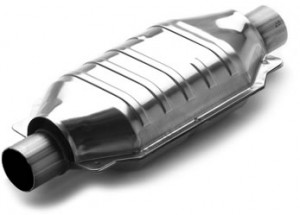While waiting for the golden age of green energy and sustainable, environmentally friendly fuels to arrive, chemical research is focusing on efficient methods to contain the damage caused by the exploitation of fossil fuels. One important issue is reducing the dangerous emissions of automotive and industrial exhausts, which contribute to the production of highly polluting volatile nitrogen oxides.
The review by Liu and Gao, just published in Catalysis Science & Technology explores in detail the NOx storage/reduction process (NSR), one of the three common disposal techniques for nitrogen oxides together with direct decomposition and selective catalytic reduction (SCR). Among these, the direct decomposition suffers from an high activation energy, the SCR process is best suited for stationary sources and very large engines, while NSR was designed for small car engines.
The NSR process works in a stepwise fashion; first the NOx are trapped in the storage component of the NSR catalyst during the lean-burn cycle (high air-to-fuel ratio) to be successively released during the rich burn cycle (low air-to-fuel ratio) and reduced to N2 on the catalyst by hydrocarbons hydrogen and CO produced in the rich cycle. The common catalyst for NSR is generally composed of precious metals, storage components and support metal oxides (Pt/BaO/Al2O3).

In this Minireview a comprehensive description of the mechanisms in operation in each step is presented in detail, together with an explanation of the role of each component and the advantages of different materials and supports.
To know more about the workings of these catalysts, click here.
A review of NOx storage/reduction catalysts: mechanism, materials and degradation studies
Gang Liu and Pu-Xian Gao
Catal. Sci. Technol., 2011, Advance Article
DOI: 10.1039/C1CY00007A, Minireview










